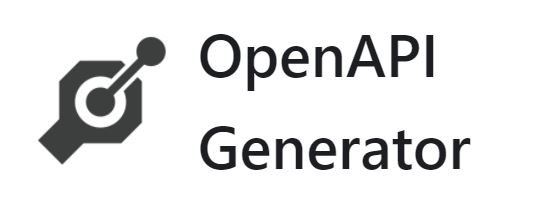Restful API documentation tools have automated the process of technical documentation. Technical writers can leverage these API documentation tools, if they have the know-how of programming languages, to generate technical documents.
- What are the Best Restful API Documentation Tools?
- How to decide which Restful API Documentation tool to choose?
- FAQs
- OpenAPI Specifications
- Conclusion
What are the Best Restful API Documentation Tools?
Since API documentation generators are rampantly used, here is a list of the most used generators that are open source and support OpenAPI v3. Technical Writers use these tools to create API documentation.
1) DapperDox

DapperDox is an Opensource API documentation tool that provides a smooth rendering of your OpenAPI specifications.
It allows you to integrate diagrams into OpenAPI specifications with GitHub Flavored Markdown (GFM) documentation.
It can proxy the user developer platform and allows full integration of API key generation and management corresponding to specifications and guidelines.
Its built-in API explorer allows API documentation experiments and enables smooth integration and authentication for the API key model.
Pricing
Fee: Completely free
You can download DapperDox from their website to get full access. Check it out here.
2) OpenAPI Generator

This tool is extensively used due to its user-friendly interface. It supports over 50 client generators, allowing users to generate code for interacting with any server exposing an OpenAPI document.
It has customizable formats according to the users’ required options and features. An interesting thing about the OpenAPI generator is that it saves you the hassle of developing servers for your own OpenAPI documents. It can create server stubs in more than 40 languages and technologies such as Java, PHP and HTML code.
This tool allows the conversion of the metadata for an API into other formats such as external HTML code and Cwiki, allowing the distribution of static documentation to the API users.
Pricing
This restful documentation tool is free of cost and is accessible for the users on the main website. You can the website from here.
3) Swagger

SwaggerHub, from Smartbear, is considered one of the best Restful API documentation tools because of its diverse features.
SwaggerHub is a complete platform combining features such as Swagger UI which is an interactive documentation tool and Swagger Editor which is an open-source API editor.
Swagger UI allows users to easily identify what actions are performed by which API endpoints. It supports multiple formats such as YAML and JSON.
Its interactive documentation process enables you to enhance the software developer’s experience.
Pricing
Swagger API documentation tool provides free access to a single user. While, a package for $8, 80, and 267 is available for a team of 3, 5, and 10 users respectively. An enterprise version is also available for purchase. You can contact them directly for a customized enterprise package. Visit Swagger for more details.
4) Stoplight

API documentation from Stoplight allows the creation of documentation that are easily accessible by computers and laptop’s local document apps. This feature also automatically updates your APIs when changes occur in real-time. Stoplight allows you to communicate with customers and users through code review and commenting. You can easily organize new files, and alert and update your team about a change or rewrite in the documentation.
Its diverse built-in features allow API consumers to easily create documentation according to Open API specifications.
With the provided code samples, markdown guides, API blueprint, sample output, and catalogs, the user can create API docs.
The software allows users to collaborate on JSON schema and OpenAPI-based API designs. One of its well-reviewed features is that it allows the testing of designs in real-time.
Pricing
Stoplight provides free access to a single user but with limited functions. You can purchase the starter package for up to 5 users for $99/month. A professional package for 10 users is also available for $399/month. Enterprise users can contact Stoplight for customized packages based on the number of users and needs. Head towards Stoplight for more information.
5) Redoc

The Redoc tool is another important Opensource tool for generating Restful API documentation. It is a customizable tool based on ReactJS, allowing users to have control over themes, fonts, images, and API blueprints.
It comes with a CLI tool that enables the user to check their OpenAPI definitions. It supports both v2 and v3 of OpenAPI. It allows users to deploy API with ease and browse API methods, results, parameters, and code samples.
This restful API tool is primarily designed for larger enterprises and carries more diverse API methods. Redocly provides a platform compliant with OpenAPI specification, to build interactive and visually appealing documentation that can be deployed seamlessly into any currently existing continuous integration.
Pricing
A trial package is available for free for 14 days for single users. The basic plan is available for $79/month, while a professional plan is available for $360/month. The enterprise package for this API documentation tool is also available. You can contact Redoc.ly directly to purchase a customized enterprise plan based on enterprise needs.
6) ReadMe

ReadMe is another interactive Restful API tool that provides an easy-to-use interface and diverse features to develop streamlined documents.
Its add and drop editor allows developers to create beautiful API documentation. It enables API developers to include API keys directly in the documentation and produce code samples automatically. This capability enables developers to easily execute API calls.
Pricing
ReadMe offers different packages for $0, 99, 399, 2000 per month for free, startup, business, and enterprise businesses. Head towards ReadMe for more information.
7) Postman

Postman is a Restful API tool that provides a platform capable of creating machine-readable API documents.
It allows generating documentation easily and quickly. It automatically fills the API docs with machine-readable instructions and dynamic examples. The API consumer can easily access code samples, sample requests, and headers, etc. with the Postman platform.
Postman allows developers to share their APIs publicly within seconds. Its interactive features make collaboration in bigger developer teams more dynamic and in real-time with automatic updates so you can create amazing API docs.
Pricing
Postman offers a free package for a single user. While a package for $15/month can be purchased per team member. A professional package is available for $36/month/single user. Enterprise businesses can contact Postman for customized packages depending on the enterprise needs and the number of users.
How to decide which Restful API Documentation tool to choose?
Now that we have discussed some APIs, it is important to understand which one is best for you to choose. To make the right choice of API documentation tool, you should consider the following points.
- The user should be able to auto-generate API documentation from the open API definitions
- It should be possible to maintain multiple versions of the API Documents
- The document should be automatically updated
- The user interface should be well designed
- The API docs should be comprehensive and self-explanatory.
- It should be robust to support collaboration in project management and development
- It should be easily customizable
If you keep these points in your mind, you’ll end up choosing a good API documentation tool best for your business.
FAQs
Here are some brief answers to the frequently asked questions related to API documentation & tools:
What is an API?
API or Application Programming Interface is a set of rules describing how computers and applications communicate with each other. APIs are shared by companies so that developers can create applications that use their software services.
What is Restful API Documentation?
API Documentation is a technical reference manual or an instruction guide that summarizes the complete information to use an API. It contains details about the functions, workflows, classes, return types, arguments, etc, along with tutorials and examples. Thus, it is important to have interactive documentation with a quick start guide, SDK examples, explanations on authentication info, request, and returns.
Restful API is based on an architectural style named Representational State Transfer. This architectural style enables communications in web development services.
Restful APIs are considered more efficient than simple APIs because of REST architecture uses lesser bandwidth. These API tools can also be developed with Python, JavaScript, and HTML code programming languages.
The API documentation also gives timely updates on the API lifecycle via code communication so that the user is aware of newer API versions.
API documentation explains the possibilities of your API and how to get started with it. It also serves as a guideline for developers to address their questions about syntax or functionality.
Why need API Documentation?
Good documentation is critical for the developer experience, which has an impact on API adoption and long-term success. A well-structured and well-written documentation that explains how to utilize and integrate an API successfully is beneficial to developers.
The reason for this is that no matter how effective an API is for establishing and extending your software services, it is useless if the developer does not understand it.
API documentation explains how to utilize an API and what services it provides. Thus, technical users, wanting to move forward in their software development, should be able to easily understand the value and usage of your API by referring to your documentation.
The overall experience of the developer when discovering, learning to use, and finally integrating with an API is termed as developer experience. The developer experience is critical to the adoption and long-term success of an API, hence good documentation is critical.
What are the benefits of API Documentation?
Here are listed some benefits of API documentation:
- Improves the experience for software developers using your API
- Reduces the time spent to take new users onboard
- Leads to good product maintenance and quicker updates by helping your internal teams access details of your resources, methods, and their associated requests and responses
- Enables all team members to stay aligned on what the API’s objectives are, and how the API’s resources are exposed
- Helps identify the issues and bugs in the architecture
- Reduces the amount of time spent on understanding how the API works and fixing unexpected errors
- API documentation can be created in multiple programming languages such as YAML, RAML, JSON, and PHP
What are the methods of writing interactive API documentation?
You can generate documentation for your API in two ways:
The first is by manually writing the documentation. This method requires manually creating a template and writing the introductions, versions, and example code snippets. Hence, it takes a lot of time and effort.
The second and modern method is using API documentation generators or documentation tools. This method is fully automated and the tool automatically reads and parses the OpenAPI for your reference documentation. The best thing about it is that it takes very little time and doesn’t require constant updating as it is done automatically.
OpenAPI Specifications
Open API Specification (OAS) also known as the Swagger Specification is the most common and powerful API description format for RESTFUL APIs. It enables the users and computers to get familiarized with the scope of the services of API without accessing the source code or documentation.
API documentation tools use Open API to display the API, code generation tools to generate servers and clients in other programming languages, and also provide effective testing tools, teaching tools, and command-line tools.
A well-defined OAS allows the consumers to comprehend and interact with the services even if they have little knowledge of implementation logic.
API providers are now easily able to generate documentation, libraries, sandbox environments for testing, with the help of any RestfulAPI documentation tool.
Swagger/OpenAPI, as a widely used standard, features a wide number of API documentation generators that leverage the API specifications format.
Conclusion
All the documentation tools discussed in this article can create API professional documentation. One can not explicitly deem any one tool as the best. The overall experience and requirements of an API documentation software depend on the user’s specifications, definitions, objectives, and documentation needs.
However, in our opinion, the Swagger restful API tool is considered best API documentation tool among all the tools mentioned due to their interactive user interface, ease of maintaining documentation, extensive range of tools and features for API consumers with any level of technical knowledge, and compatibility with a number of programming languages.